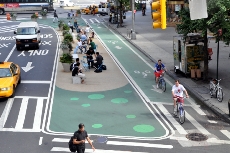
The twentieth century has seen a large shift in the population in urban and rural areas in almost all countries. The industrialization and subsequent rise in opportunities has given rise to migration of large number of people from rural areas where agriculture used to be the dominant industry to urban areas in search of jobs. It is estimated that more than half of world population now lives in urban areas compared to just 14% in 1900 and 30% in 1950.
Now the rise of urban population brings with it challenges that some of the cities may not be ready for. The need to access and mobility rises with the population as well as crimes and poverty. Many of the cities in the developing countries are not prepare to handle such a large influx of people. They just do not have the infrastructure required to move so many people and the vehicles that come with that. This has created significant challenges for city planners in terms of traffic jams, pollution and resulting loss of productivity. How can city planners deal with such challenges?
The answer lies in providing better road infrastructure as well as equal access to all types of transportation instead of focusing on just cars. Many cities have started to pay attention to such infrastructure improvements on the last few years. They are looking at the problem on holistic fashion to ensure that their citizens are able to go from point A to point B with the least hassle, while at the same time helping environment. A number of approaches have been implemented in various cities of the world. Here are some of them:
- Public Transportation – Many cities especially in the developing countries have focused on building a better public transportation system that connects various parts of the city via multiple modes such as subway, buses, trams and so on. This enables them to move large number of people while producing less pollution. Cities that have shown large increase in population in a short time have benefited by building a good public transportation system.
- High Occupancy Highway Lanes (HOV) – HOV lanes has become popular in large US cities where one or more lanes in the freeway are reserved for vehicles with 2 or more passengers. This encourages sharing and reduces the number of cars on the road.
- Dedicated Bike Lanes – Bike lanes have become very popular in the downtown and other central parts of the cities where there is not much room to add roads or vehicles. Providing dedicated bike lanes improves the safety, and encourages more people to ride bike instead of bringing them cars to populated areas. The health benefit resulting from more people riding bike is an added benefit.
- Walking Paths – Having walking paths that allows people to reach to all areas of the city can greatly enhance the accessibility and sustainability for cities and its citizens. It also allows disadvantaged people who do not have access to transportation to be able to move and go to work. Again, as in the case of bike lanes this provides the added benefit of health and sustainability.
As can be seen just building more highways is not the solution for large increase in urban population. City planners need to take a step back and look at the problem from multiple angles to provide modes of transportation to its citizens. After all better access and mobility is every citizen’s fundamental right.






